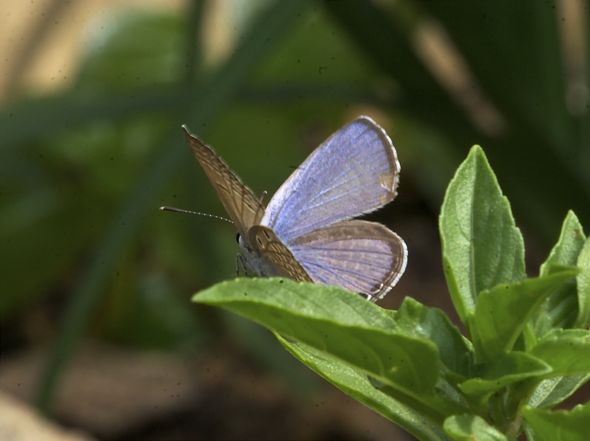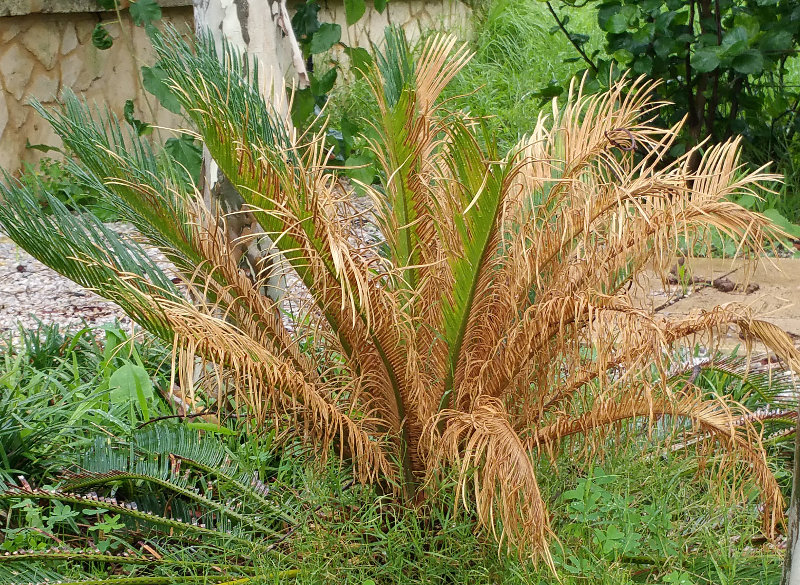If the new leaves on your cycad are rapidly turning yellow and the edges going a whitish-straw colour, then you probably have an infestation of a nasty little pest called the cycad moth (Theclinesthes onycha).

Photo Credit: Besgroup.org
The Cycad Moth, which is a blue-grey butterfly, lays eggs in the newly emerging crown of the cycad. The eggs hatch within 2-3 days and the hungry caterpillars immediately start eating the new foliage as it unfolds. The caterpillars can only eat the soft new foliage for about 2 weeks until it hardens up. Generally, a cycad may flush from the centre 2-3 times per year depending on weather and care. If you can protect the cycad during the few weeks it flushes you will have an amazing full cycad. However, if you miss a cycle and the inner foliage becomes damaged it may take 12 months or more before it becomes they become the outer fronds and can be cut off.
A pro-active measure to protect the cycad before the moth comes is the use of “Confidor” tablets. Dig a small hole in 3-4 places around the roots and place the slow dissolving tablets in. Note: these may take up to 2 months to provide systemic protection and may not be effective if root uptake is slow. Alternatively, if you notice a flush starting and have not installed tablets, spray the liquid form “confidor” over the leaves of the plant. This will provide system protection in days rather than months. It will need to be repeated weekly to guarantee protection.
If you have missed the moths and now see the caterpillars, (Young are green and older ones are brown) spray with Carbaryl or remove them by hand. You may need follow up sprays as more hatch. This spray must contact the pest to be effective.
The cycad blue butterfly attacks the fresh growth as it is unfolding. You have to get onto it as soon as you can. Once it has been affected it will continue to show the ugly damaged growth once it has turned into adult foliage, and is too tough for the young caterpillars to chew.
Contact the girls in the nursery to chat further about the cycad moth (07) 4946 1258

Photo Credit: Pacsoe.org

Recent Comments